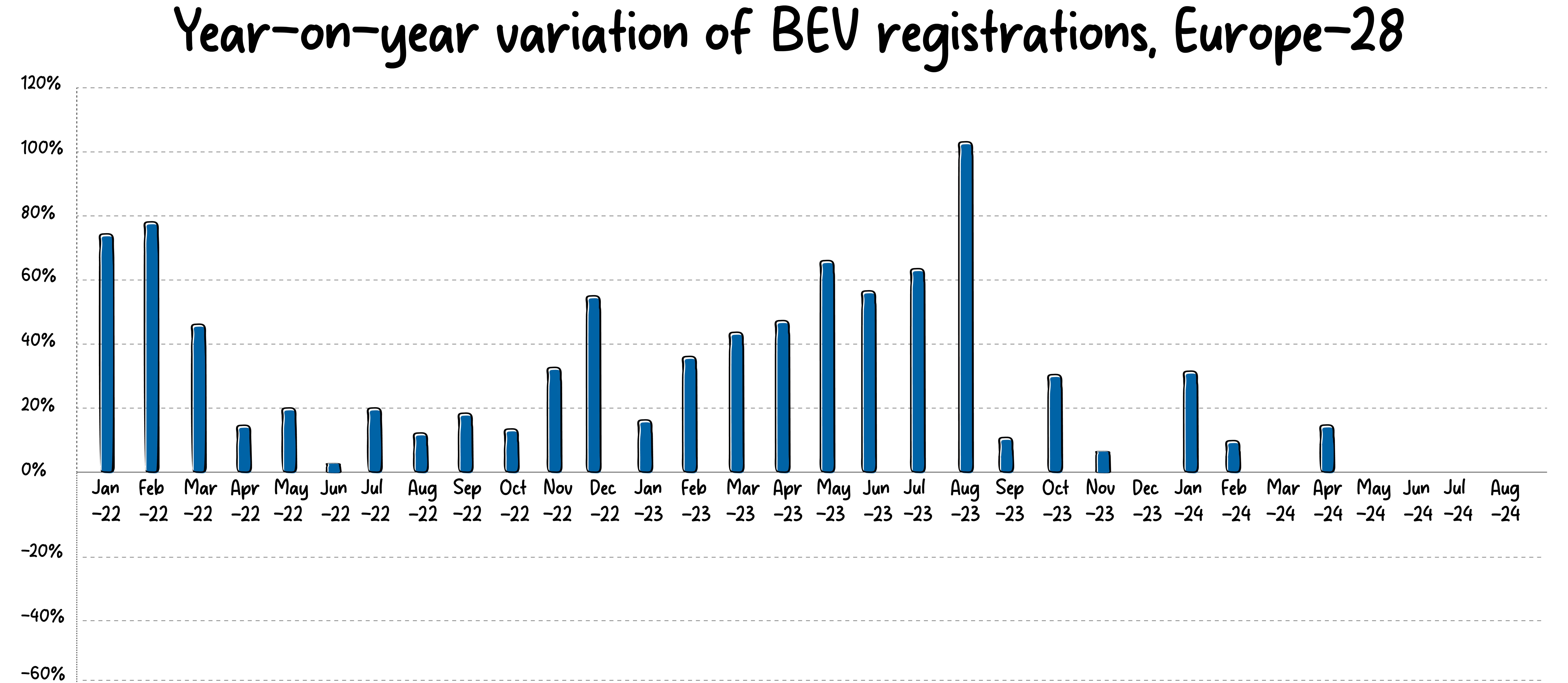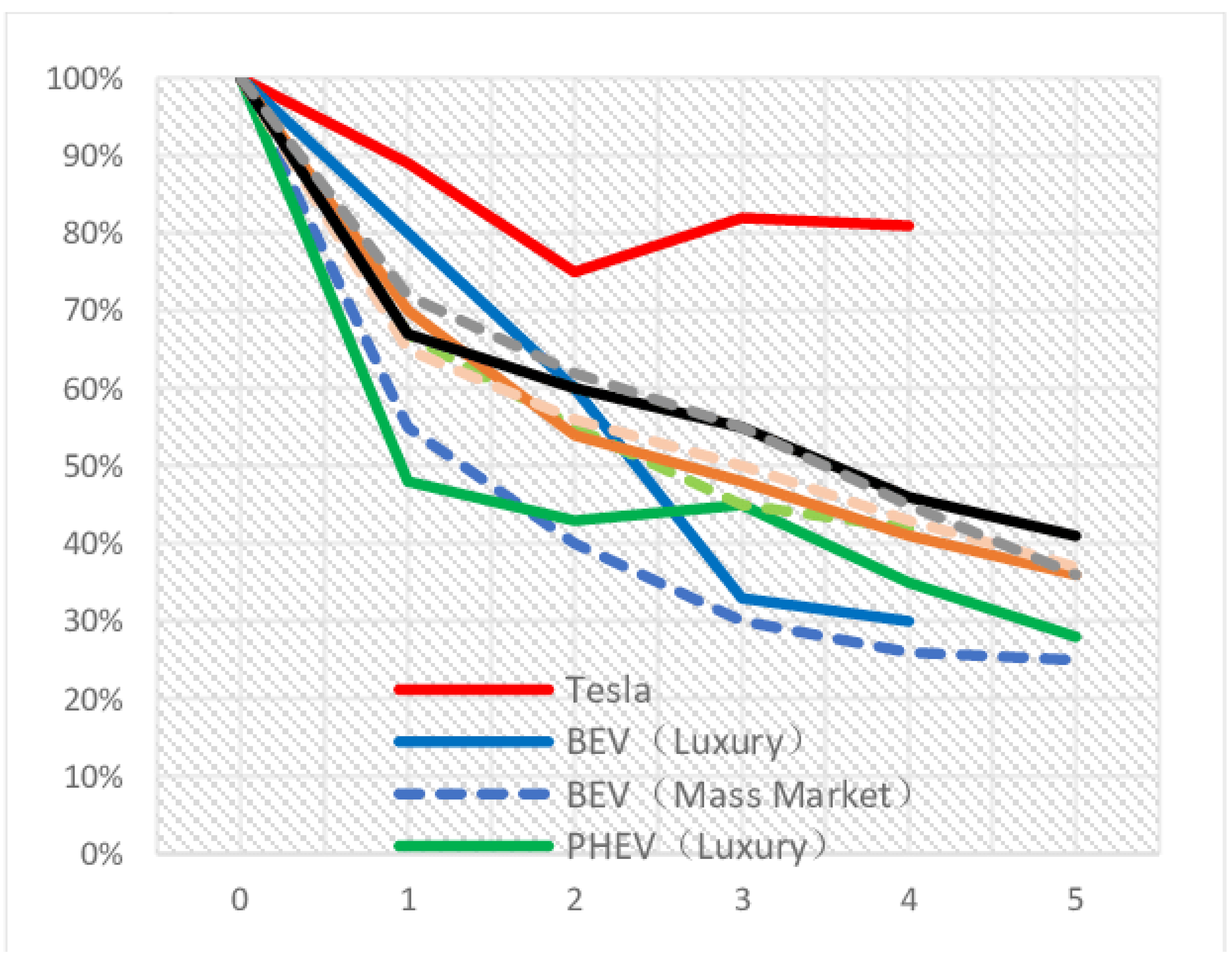Introduction
In the industrial automation and control world, we had a phrase we used to describe customer behavior, “Are the dogs eating the dog food?” Or, is the customer buying what we are selling? This could be either a physical product or marketing messages.

A short few years ago, we were rushing (or being rushed) into an all electric car future. The projections headed into 2024 were 21% growth. Those predictions are being revisited, and scaled back, often dramatically. What happened? Have the dogs stopped eating the dog food? Interestingly, the words often used to describe the slow down in Electric Vehicle sales are “lower than expected appetite”. Jato Dynamics reports that the European market in August, 2024 fell by 36% year-over-year.

The Early Adopter - Early Majority Chasm
Back in 1962, a smart guy named Everett Rogers, who was a professor of rural psychology, came up with a theory to explain this. He called it the "Diffusion of Innovations". It's a fancy way of saying that people in any society can be grouped based on how quickly they adopt new products or behaviors.

Innovators: The Trailblazers
Ever met someone who always seems to be ahead of the curve? These are the innovators. They're a small but mighty group who love taking risks and being on the cutting edge. "Innovation is the ability to see change as an opportunity - not a threat," said Steve Jobs. These folks are the ones who introduce new ideas to the rest of us because they can't wait to share their latest discoveries with their friends and communities.
Early Adopters: The Opinion Leaders
Next, we have the early adopters. These forward-thinkers are often highly respected in their circles. Their seal of approval is like gold. They help "cross the chasm" a term popularized by Geoffrey Moore, which means they bridge the gap between the trendsetters and the majority.
The Early and Late Majority: The Pragmatic Followers
This is where we find most people—about two-thirds of the population. The early majority like to take their time. They want to see if something really works before jumping on the bandwagon. They wait until an innovation proves its worth and becomes the new status quo. The late majority, on the other hand, are even more cautious. They're not easily swayed and need a lot of convincing, often through peer pressure. They want innovations to be thoroughly tested and widely accepted before they give it a go.
Laggards: The Traditionalists
Finally, we have the laggards. These folks are the last to adopt a new product or behavior, if they adopt it at all. They're highly resistant to change and are tough to reach with marketing campaigns. They often have minimal exposure to media and prefer sticking to their tried-and-true ways. As the saying goes, "Old habits die hard".
Unnatural Curve
It’s important to point out that the adoption curve for EV’s has not been naturally evolving. There have been billions of dollars from governments (really, taxpayers) poured into the EV market that got us through the Innovators and Early adopter parts of the curve, fast. Despite these efforts, the next wave of potential adopters will do so at their own pace. Couple that with the high inflation, higher interest rates, and sluggish economy, well, there ya go.
Are we at the EV Chasm?
I would argue yes. And we should not be surprised. Most of the time, the chasm goes unrecognized. Have you ever seen a new product sales curve that has a chasm? Unlikely. Who wants to put that chart in front of the board?
We have all seen movies of someone walking on a snow covered mountain, then suddenly, a chasm opens up! The thing is, the chasm was always there. It has always been there. But there is more to it than that. The Innovators and Early Adopters, whose role is normally to get the Early Majority excited about the new technology, are sharing their experiences. Recent data shows that one-half of them want to switch back to gasoline, aka, ICE vehicles. It would stand to reason that they are sharing their frustrations of their EV experiences.
Dad Factor
When I was kid, my dad would pile us into the car to take trips to visit family in Ohio, Pennsylvania and Maryland. My dad HATED to stop. So much so that he brought along a coffee can with a plastic lid for me and my sisters to use as a toilet. What are the odds my dad, who could not spare a 15 minute bathroom break, would have been willing to take 30 minutes or more for a quick charge, only to have to do it again in another 200 miles or so? UNLIKELY, at best.
Charge Availability
There are roughly 196,643 gas stations in the USA. (Not sure how 196,643 is “roughly”.) The number of fast chargers “experts” say the US needs by 2030 is 182,000. That would be for 30-42 million electric vehicles. A 2023 report from NREL (The National Renewable Energy Laboratory) puts mid-level adoption at 33 million. The US currently has 40,000 charging stations. How many of those are available when you need one? A 2022 study found that 27.5% of chargers were not functional when needed. That’s the reality being experienced by EV owners, which conflicts with EV service providers (EVSPs) reporting data of 95-98%.
Weather and Load
Consumer Reports found that EV range was impacted by as much as 25% when driving at 70mph in cold weather. The reason is simple, when driving in cold weather the EV must manage the battery temperature and keep the cabin warm. Short trips with frequent stops shortened range by 50%, due to the need to continually reheat the cabin. The best temperature to operate an EV at is 80 degrees fahrenheit.
Range drops drastically with a heavy load. Like ICE pick up trucks, pulling a heavy load can really impact the range of an EV pick up. An article on Hard Working Trucks related the experience of pulling a 7000 lb trailer carrying a Kubuto tractor. Starting out the range was 288 miles. Once trailer weight and dimensions were inputted the range was recalculated to 164 miles. That is not surprising and inline with an ICE pick up experience. However, seven miles into the trip, the range was recalculated and dropped to 115 miles. That’s an initial drop of 27% and then an additional drop of 43% more.
High Prices and Residual Value
EV’s are expensive. The majority of EV’s available for sale are high-end SUVs. In 2023, a full 75% of electric cars available in the USA were SUV’s, pickup trucks and large cars. Manufacturers were fooled by the Early Adopters, aka “people with money.” The next wave of buyers, the Early Majority made up largely of middle-income families, are less likely to take out a 60-72 month loan on an expensive vehicle, especially when at the same time the residual value curve of EV’s is brutal.

EV’s, on average, cost more to purchase and insure, but are worth less as time goes on. An EV loses about 49.1% of it’s value after five years, compared to 38.8% for all automobiles.
Insurance Costs
The cost to insure an EV is an average of 19% more compared to an ICE vehicle. This is due to the higher initial purchase price and cost to repair. If the battery pack is damaged, it is more economical for the insurer to total the car, instead of paying to repair it.
With all of those factors (and more) working against the EV market, can it cross the chasm? Will the dogs start eating the EV dog food once again? Yes. The EV market will rebound.
- Further return to PHEV, Plugin Electric Hybrid Vehicles as a “first step” for skeptical buyers.
- Smaller, more budget friendly vehicles, like the highly anticipated Tesla Model 2.
- Expanding and completing the planned charging network.
- Increase/renew government incentives (current incentives expire soon).
- The incoming US administration may be unlikely to do this.
- Marketing strategies that position EV’s as a smart second car for consumers. Call them “runabouts” like in days of yore.
- Black Swan event. What would happen if a climate emergency was declared? Would that increase EV adoption? This is unlikely to happen in the USA, considering the outcome of the recent Presidential election, but that is not to say it won’t happen in some other country or region.

Final Thought - Are you ready to jump THE CHASM?
With all of the factors pushing against, or slowing down EV adoption, is there an opportunity for the smart consumer? You betcha by golly! There hasn’t been a better time to purchase or lease a new EV or buy a used one.
- High Market Day Supply (how many days it would take to sell existing inventory at current sales rates).
- Tax Credit on EV’s. These are expiring soon!
- Deep discounts from manufacturers.
- Great deals on EV leases.
Before you buy, you should check a few things:
- What is your choice of Electrified vehicle?
- Standard Hybrid
- PHEV, Plug in Hybrid Electric Vehicle (Like Toyota Prius Prime)
- Full Electric (Like Tesla, Hyundai Ioniq 6)
- Can your home support EV charging? You need at least 100 amp service, 200 amp is even better.
- What is the insurance cost? EVs can be more expensive to insure.
Are you someone who goes against the grain and common wisdom?
Are you a lead dog or part of the pack? Taking advantage of the soft
EV market could prove rewarding.

----------------------------------------
Disclaimer:
The content provided is intended solely for general information purposes and is provided with the understanding that the authors and publishers are not herein engaged in rendering engineering or other professional advice or services. The practice of engineering is driven by site-specific circumstances unique to each project. Consequently, any use of this information should be done only in consultation with a qualified and licensed professional who can take into account all relevant factors and desired outcomes. The information was posted with reasonable care and attention. However, it is possible that some information is incomplete, incorrect, or inapplicable to particular circumstances or conditions. We do not accept liability for direct or indirect losses resulting from using, relying or acting upon information in this article.
ISO 9001:2015
Certified
17+ Million Product
Configurations
Lifetime
Warranty
Guaranteed
Same-Day Shipping
Advantage Pricing
Save Up To 40%
c3controls Headquarters, USA
664 State Avenue
Beaver, PA 15009
